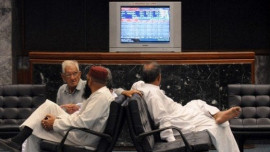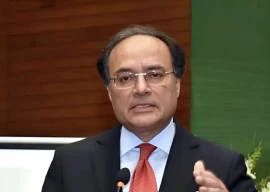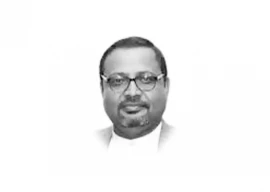Car sales continued to cruise –rising 17% in the current financial year so far – despite industry players increasing prices on a regular basis.
The growth primarily resides in the 1,000cc and below segment – which includes Suzuki Mehran and Diahatsu Coure – as its sales grew by at least 30%, said Topline Securities analyst Nauman Khan. Sales in the 1,300cc and higher segment – which includes Honda Civic and Toyota Corolla – grew by a meagre 1% in the period under review, added Khan.
Sales stood at 98,252 units in the first eight months of fiscal 2012 against 84,225 units sold in the same period of the preceding year, according to data released by Pakistan Automotive Manufacturers Association on Friday.
The strong growth can be attributed to the rise in remittances and the yellow cab scheme offered by the Punjab government, said analysts.
Industry players have protected profit margins from rising costs or currency depreciation by increasing prices on more than one occasion in the current financial year.
Indus Motors raised its product prices thrice, while Suzuki jacked up prices twice since September 2011, according to a JS Global Capital research note.
Pak Suzuki Motor Company, the major player in the lower segment, posted a strong growth of 35% to 70,162 units during July 2011 to February 2012.
Mehran and Bolan, prime beneficiaries of the yellow cab scheme, grew by 37% and 47%, respectively. The Punjab government allocated Rs4.5 billion in fiscal 2012 budget to provide 20,000 yellow cabs to youth of the province.
Moreover, sales of latest arrival to the Suzuki family Swift reached 4,500 units, up a gigantic 86% compared with 2,420 units sold in the same period last year.
Overall, the company’s market share improved to 63% against 54% in the same period last year.
Indus Motors growth remained subdued with sales growing by a dismal 4% to 34,366 units compared with 32,991 units in same period last year. The company’s flagship product and the country’s highest selling car Corolla posted a growth of only 5% despite the company adding new variants of the car in the 1600cc segment and CNG vehicles.
Sales have been adversely affected by reduced farm income this year on account of higher input cost – fertiliser and other products – and reduced product prices particularly cotton, said Khan.
Cuore sales experienced a substantial decline of 34% to 2,765 units ahead of its complete shut down at the end of the financial year. The company announced earlier that it plans to pull the plug on Coure before June 30, 2012 on account of its high cost of production.
Honda’s production woes continued as it stood at a standstill for the third straight month in February due to unavailability of parts, PAMA data shows. Honda all around the world has been facing shortage of parts since October because of floods in Thailand.
Production is likely to be back on track in March as the company’s Lahore plant was expected to restart operations at the end of February, according to an announcement on its official website. Sales of Honda Civic declined by a massive 37% to 2,781 units and sales of Honda City slumped by 29% to 4,243 units during July 2011 to February 2012.
Published in The Express Tribune, March 10th, 2012.
COMMENTS (9)
Comments are moderated and generally will be posted if they are on-topic and not abusive.
For more information, please see our Comments FAQ
1735365305-0/Untitled-(3)1735365305-0-405x300.webp)
1735363887-0/Untitled-(2)1735363887-0-165x106.webp)
1735362150-0/Untitled-(1)1735362150-0-165x106.webp)








1735283394-0/sidra--(9)1735283394-0-270x192.webp)




1720030784-0/Smog-free-Lahore-(14)1720030784-0-270x192.webp)






Parts of this article are remarkably similar to an analyst report on the topic i read last month. For the most part, only the figures have been updated. And im not referring to Topline's report (the source cited above. Shoddy work ET. Tsk tsk
@Muhammad shoaib:
...a further point.
I saw a honda Civic and I presume it was assembled in Pakistan. That was not "scrap" I assure you.
It was as well equipped as any US-build Honda Civic.. It may not have NINE air-bags as in the US but it is extremely well fitted out complete with the GPS Navigation, cruise control and automatic.
Sure the auto industry is Pakistan is highly concentrated and earns high profits behind protective walls and no competition. It is an excellent candidate for a probe by the CCP. They may have already done it and the matter is probably lying in a Pakistani court never to see the light of day again.
@Muhammad shoaib:
You make good points about the ratios.
However, my point is rather different: how is this boom consistent with the "economic crisis' that we keep talking about? Is this data being picked up in the national accounts? What about the forward and backward linkages that the auto industry creates. The thousands of jobs it supports in the vendor industry? Has anyone calculated that?
On my last visit to Pakistan last month, I was simply amazed at the level of economic activity I observed. The place is humming. Yes, I know I was only in the major cities and there are poor people. But even the agriculture sector is benefiting hugely through an improvment in its terms-of-trade.
Is anyone picking up this level of activity? Or are we still using -- for example -- fixed coefficents for cement and steel to calculate construction activity? Coefficients that have not been changed since I was in government! And is the SME sector still growing at the FIXED rate of 7.5% per annum based on a survey done 20 years ago?!
Why do we assemble vehicles. We do not have economies of scale. Import vehicles and give a better and cheaper product to the buyers.
Pakistan population increase 2% yearly which is about 36 lak population increase while car sales is only 2 lak yearly. In economics,every thing is counted as percentage wise. Pakistan has lowest car ratio per population in the world about 20 car per 1000 less than world average of 130 per 1000. Even countries like indoneshia malaysia has 130 car per 1000 people. SO high car sales does not reflect true pictures as more than 34 lak pakistani shift to cycles and motorcycles and private transport due to extreme high car prices due to no competition and complete monoploy due to no choice for customers to buy what except scrap pakistani local cars on high prices. Governments should intervene if they like see good car on low price to the inflation struck pakistani people. Dollar was on 60 in 2001 and went to 91 in 2012 which is 40% increase but car rates increaes 170% during this time
Karachi, a city of 18 million does not have a proper public transport system says a lot about our planners & politicians. Things will go from bad to worse. No end in sight.
The country where Public Transport system is inadequate experiences surge in private transport. Indeed, we are not vehicle producing country, we are vehicle assembling country; it is hurting economy badly.
So how much tax, Corporation Tax, do they pay?
More cars, more traffic jams, more pollution, more honking, more noise, more time spent inhaling poisonous fumes, more smog and global warming.
Solution is investment in cycle friendly roads and public transport.